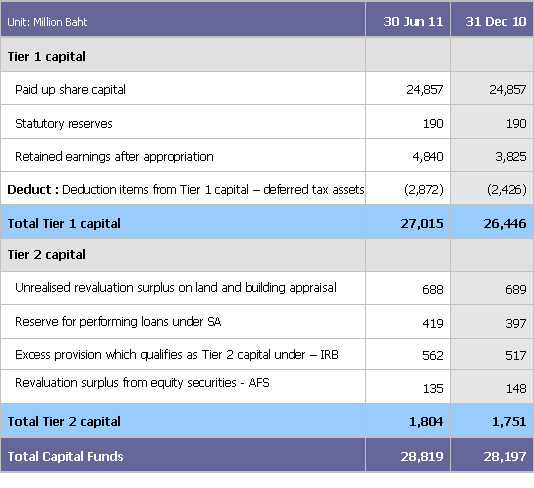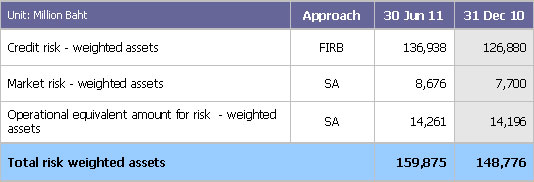Capital Disclosures
In compliance with the Basel II The Third Pillar – Market Discipline and the Bank of Thailand ('BOT') disclosure requirements, United Overseas Bank (Thai) – 'the Bank' has developed a set of disclosures on a solo basis for the positions as of 30 June 2011, compared to the last period, covering:
- Capital Structure
- Capital Adequacy
- Minimum Capital Requirement by Risk Type.
The Bank assesses its capital adequacy to support current and future activities. The Bank has been approved from Bank of Thailand to adopt Foundation Internal Ratings-Based Approach ('FIRB') for credit risk capital computation since 30 June 2010. The following table represents the breakdown of the total regulatory capital as of 30 June 2011, compared with the positions as of 31 December 2010.
Capital Structure




